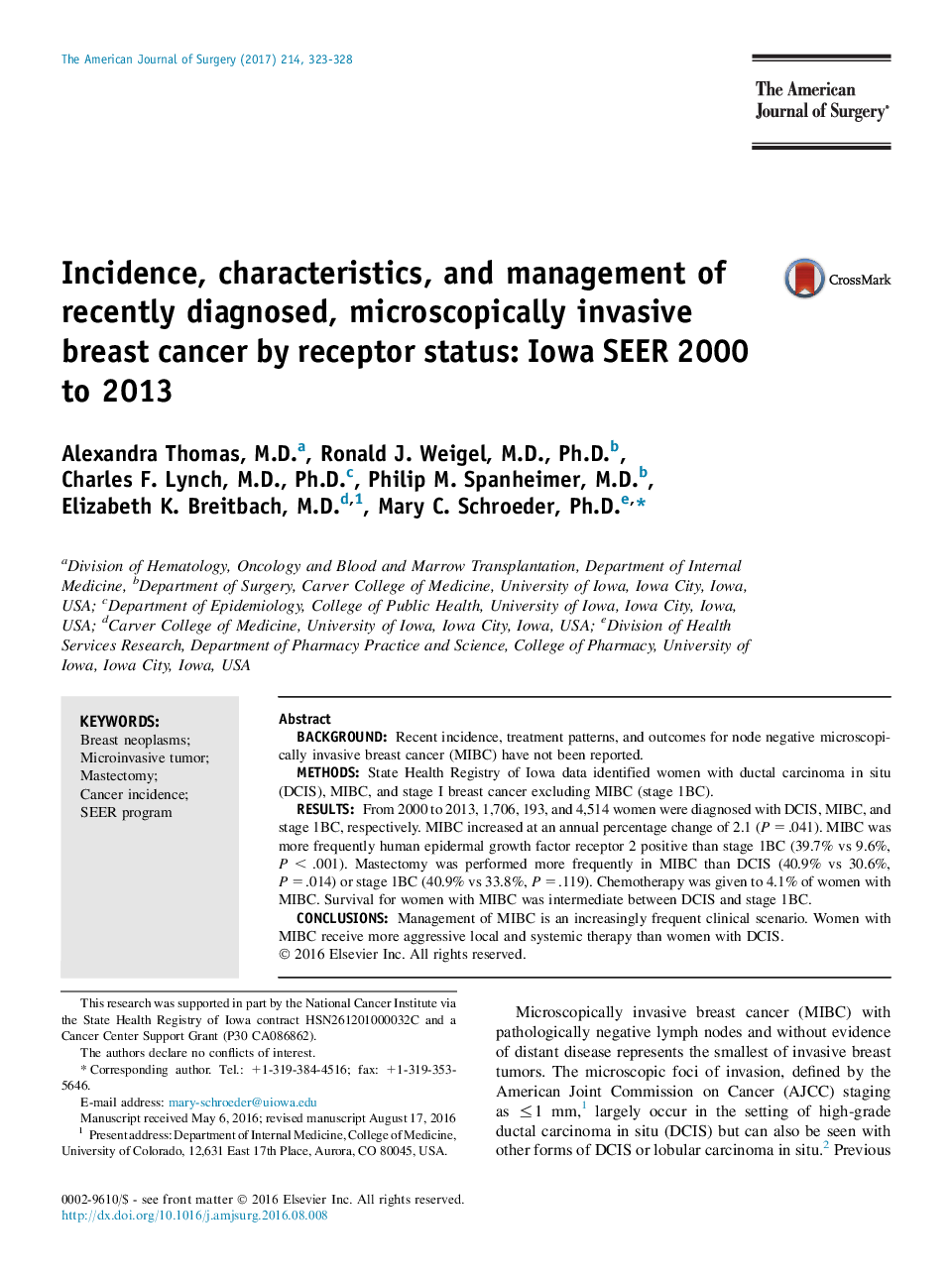| Article ID | Journal | Published Year | Pages | File Type |
|---|---|---|---|---|
| 5731028 | The American Journal of Surgery | 2017 | 6 Pages |
â¢Microscopically invasive breast cancer (MIBC) is increasing in incidence.â¢HER2-positive breast cancer is overrepresented in MIBC.â¢More women with MIBC received mastectomy and chemotherapy than women with DCIS.â¢Survival with MIBC is intermediate between DCIS and other stage 1 disease.
BackgroundRecent incidence, treatment patterns, and outcomes for node negative microscopically invasive breast cancer (MIBC) have not been reported.MethodsState Health Registry of Iowa data identified women with ductal carcinoma in situ (DCIS), MIBC, and stage I breast cancer excluding MIBC (stage 1BC).ResultsFrom 2000 to 2013, 1,706, 193, and 4,514 women were diagnosed with DCIS, MIBC, and stage 1BC, respectively. MIBC increased at an annual percentage change of 2.1 (P = .041). MIBC was more frequently human epidermal growth factor receptor 2 positive than stage 1BC (39.7% vs 9.6%, PÂ < .001). Mastectomy was performed more frequently in MIBC than DCIS (40.9% vs 30.6%, PÂ =Â .014) or stage 1BC (40.9% vs 33.8%, P = .119). Chemotherapy was given to 4.1% of women with MIBC. Survival for women with MIBC was intermediate between DCIS and stage 1BC.ConclusionsManagement of MIBC is an increasingly frequent clinical scenario. Women with MIBC receive more aggressive local and systemic therapy than women with DCIS.
